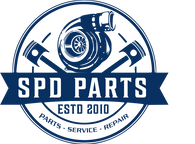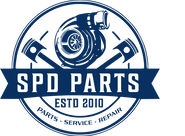A turbocharger is a device that increases the power output of an engine by compressing the air going into the engine. It is driven by exhaust gases and uses a turbine and compressor to compress the air which allows more air to be mixed with fuel and burned in the engine, creating more power.
Translation missing: en.ymm_app.searchbox_title
FAQs
Common problems with turbochargers include oil leaks, bearing failure, wastegate failure, compressor surge, and carbon buildup, damaged or destroyed wheels.
Oil leaks in turbochargers can be caused by a variety of factors, including worn out seals, damaged gaskets, and excessive pressure in the oil system or incorrect drain.
Bearing failure in turbochargers can be caused by a variety of factors, including lack of lubrication, high operating temperatures, or foreign objects entering the turbocharger.
Compressor surge is a condition where the air flowing through the compressor stalls or reverses direction, causing a loss of boost pressure and a decrease in engine performance.
Carbon buildup in turbochargers is caused by incomplete combustion of fuel, which leads to the formation of carbon deposits on the turbine and compressor blades.
Turbocharger problems can be diagnosed through a variety of methods, including visual inspection, compression testing, and pressure testing of the intake and exhaust systems.
Yes, many turbocharger problems can be repaired. This can include replacing worn out seals or bearings, cleaning out carbon buildup, or replacing damaged components.
The lifespan of a turbocharger depends on a variety of factors, including the quality of the turbocharger, the quality of the engine oil, and the driving conditions. In general, a well-maintained turbocharger can last for 100,000 miles or more.
Turbocharger problems can be prevented through regular maintenance, including oil changes, air filter replacements, and cleaning of the intake and exhaust systems. It is also important to avoid excessive heat and pressure in the engine, and to use high-quality engine oil.
A turbocharger upgrade involves replacing the existing turbocharger on an engine with a larger or more efficient turbocharger, in order to increase the engine's power output.
Someone might want to upgrade their turbocharger in order to increase the performance of their engine, or to compensate for modifications they have made to the engine.
When choosing a turbocharger upgrade, you should consider the size of the turbocharger, the efficiency of the compressor and turbine wheels, and the compatibility of the turbocharger with your engine and exhaust system.
The process for upgrading a turbocharger typically involves fitting larger compressor and turbine wheels into the housings. This method is done by precise CNC machining.
CNC machining allows for precise and consistent shaping of metal components, which can improve the performance and reliability of the turbocharger. It also allows for faster and more efficient production.
Yes, your car needs to be tuned to accept larger air intake, contact your local tuner specialist for advise.

